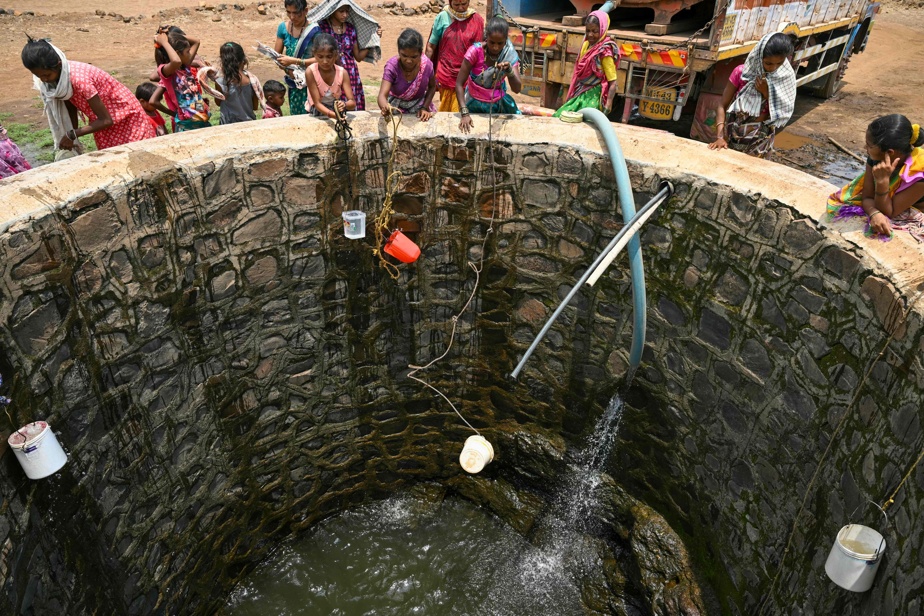(Navinwadi) “The people of Bombay drink our water,” accuses Sunita Pandurang Satgirune, whose village is dying of thirst a hundred kilometers from India’s economic capital.
With a heavy pot filled with foul-smelling water on her head, the 35-year-old villager says she spends up to six hours a day, at the height of summer, fetching water.
“Looking for water takes up all our days and our lives,” laments Ms. Satgir who has to make “four to six round trips daily” due to lack of direct connection to the water network in the village of Navinwadi.
“The people of Mumbai drink our water, but no one, including the government, is interested in us or our demands,” she further criticizes.
The megacity in the west of the country is supplied by an immense infrastructure of reservoirs linked by canals and pipes over a hundred kilometers.
According to experts, due to a lack of planning, the network is often not connected to the hundreds of villages in the region and neighboring districts, which therefore rely on traditional wells.
But demand far exceeds meager resources.
In the world’s most populous country, with more than 1.4 billion people, water tables are falling as climate change leads to erratic rainfall and more intense and longer droughts.
Wells dry up quickly in extreme heat. This year, temperatures exceeded 45°C.
When his well runs dry, Navinwadi has to rely on a government tanker, with an irregular supply, two or three times a week.
The water delivered is also untreated: it comes from a river where people wash and animals roam.
Deputy village head Rupali Bhaskar Sadgir, 26, says residents often get sick because of the water.
“For years we have been asking governments to ensure that the water offered in dams also reaches us,” she says, but the situation “is only getting worse.”
The region’s huge reservoirs provide about 60% of Mumbai’s water, according to local authorities.
Government authorities, both at the state level and in New Delhi, say they are committed to tackling the problem and have repeatedly announced programs to address the water crisis.
However, for the moment “nothing has changed” for the villagers, Sunita Pandurang still protests.
Government-led think tank NITI Aayog predicts a “sharp fall of around 40% in fresh water availability by 2030,” in a report released in July 2023.
It also warns of “worsening water shortages, depletion of groundwater and deterioration in the quality of resources.”
Groundwater resources are “depleting at an unsustainable rate,” the report adds, specifying that they represent around 40% of total water reserves.
According to Himanshu Thakkar of the South Asia Network on Dams, Rivers and People, an organization campaigning for the right to water, this story is being repeated “across the country.”
“While projects are planned and justified for drought-prone regions and their residents, most of them end up only supplying urban areas and industries that are far away,” he laments.
Prime Minister Narendra Modi announced a program to provide running water to every home in 2019.
In Navinwadi, however, residents have resigned themselves to living with very rationed supplies.
When the tanker truck arrives, dozens of women and children run out with pots, pans and buckets.
Santosh Trambakh Dhonner, a 50-year-old laborer, joins the stampede because “the more hands, the more water at home.”
“We don’t live with big ambitions,” says Ganesh Waghe, a young resident of Naviwadi. “We just dream of having water the next morning.”




